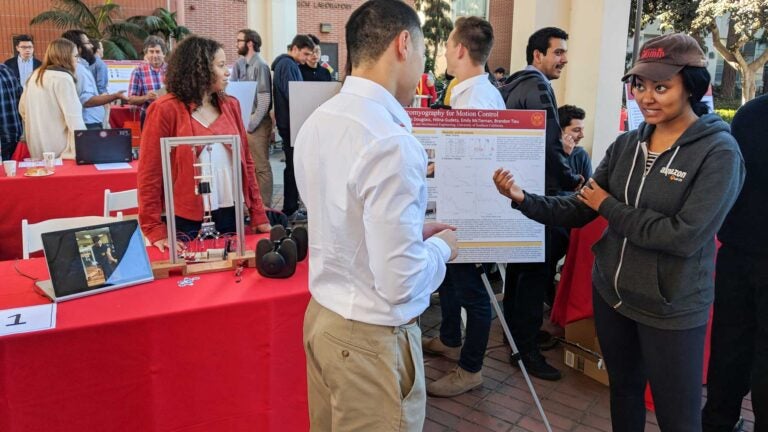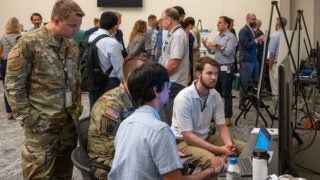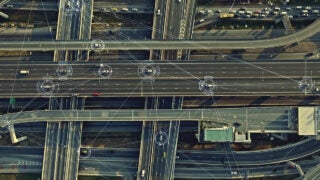
At USC Viterbi student showcase, engineers show off what they’ve learned
From flapping wings to a robotic arm, innovative projects go on display at engineering department’s first senior project showcase
A robotic arm that mimics the user’s movement. An aerial robot that flies like a bird. A stabilizer bar that reduces the roll of a race car.
Those are a few of the projects that challenged students throughout the semester in a Department of Aerospace and Mechanical Engineering (AME) course.
How did the students handle each test of their abilities?
The results were on display at the first AME Senior Project Showcase.
These classes are designed to make engineers out of students.
Julian Domaradzki
“These classes are designed to make engineers out of students,” said Julian Domaradzki, department chair at the USC Viterbi School of Engineering. “It’s not just studying a particular subject in class and solving problems on paper, but implementing knowledge that they acquired in regular classes into building something.”
Some students used their project as an opportunity to delve into questions or concerns their team grappled with over several weeks. For example, members of the USC Racing team designed adjustable anti-roll bars for their car. They plan to implement their work on a vehicle at the upcoming American Society of Mechanical Engineers’ Human-Powered Vehicle Challenge.
“These design teams often have elements to them that they just haven’t had enough time to fully vet out, or some new ideas or new technology that they want to incorporate in their design,” said John McArthur, who organized the showcase. “It’s an opportunity for them to explore that in a less deadline-driven way and really understand the theory and analysis and to do a full test on it.”
It’s for the birds
Jordi Sim, who works at USC’s Center for Advanced Manufacturing, and his teammates created the robot that flies like a bird. Powered by flapping mechanical wings, AIROS (short for Avian Inspired Robotic System) can be used to frighten birds that hover over farmland.
“A lot of farms lose crops from small birds eating them, and static scarecrows don’t work so well because birds get used to them in a matter of hours,” Sim said. “The idea is that if you have something flying that looks like a predator, it triggers the natural instincts of these birds and scares them off.”
Another group created the robotic arm that mimics the user’s movement by using electromyography, a procedure that measures the electrical signals from nerve cells that make muscles contract. By building the circuitry out of low-cost electronics, they created a cost-efficient system that has applications in technology such as exoskeletons and prosthetic limbs. After getting encouraging feedback at the showcase, they plan to continue developing their system throughout the year.
“The AME Showcase is really meant to give the students an opportunity to show off their work and get that experience of having to capture the audience’s interest,” McArthur said. “It’s your senior year, and you’ve been spending four years at USC. What can you do? What is possible now?”



